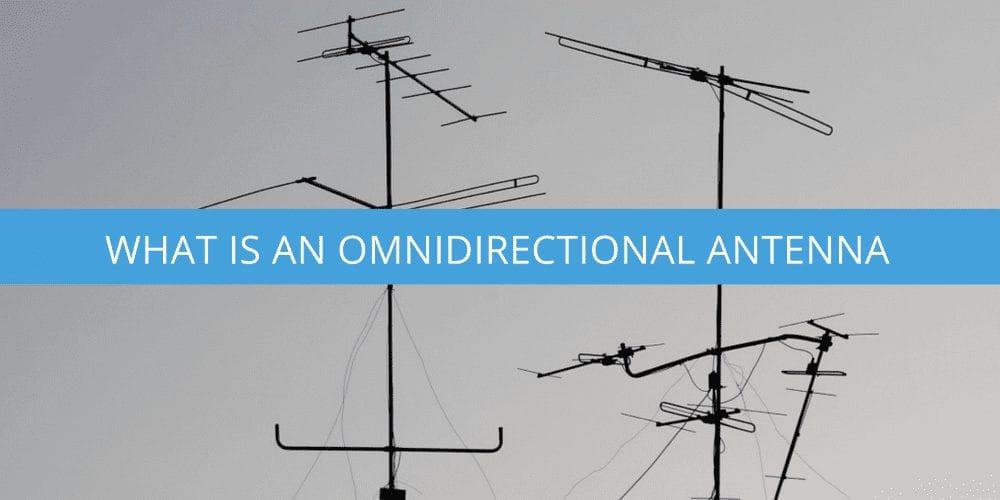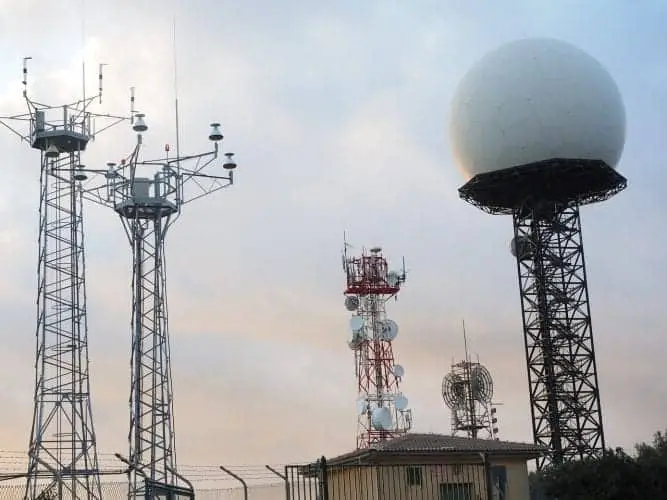An omnidirectional antenna is a type of antenna that is designed to transmit or receive signals in all directions, 360 degrees, around its axis. These antennas are often used in wireless communication systems, such as cell phone towers and wireless routers. They can provide coverage over a wide area without precise aiming.
Omnidirectional antennas are also commonly used in portable devices, such as smartphones and laptops, to provide connectivity in various environments and positions. In this article, we will delve deeper into the concept of omnidirectional antennas and explore their various applications and characteristics.
How Do They Work?
Here are the general steps of how an omnidirectional antenna receives a signal:
- The antenna is positioned in an optimal location to receive signals from all directions.
- The antenna’s radiating elements pick up electromagnetic waves transmitted by a transmitter.
- The received signals are converted into electrical currents by the radiating elements and transmitted to the central hub of the antenna through coaxial cables.
- The central hub amplifies the received signals and passes them to a receiving device, such as a TV or a wireless router.
- The receiving device processes the received signals and converts them into a usable format, such as audio and video for a TV or data for a wireless router.
- The received signals are displayed or transmitted to other devices as needed.
Firstly – signals are sent and received horizontally in all directions. So, the coverage area is always drawn or displayed as a donut or circle. So, in the middle of this circle is the omnidirectional antenna.
These antennas typically consist of a series of radiating elements, such as dipoles or loops, arranged in a circular pattern around a central hub. The radiating elements are connected to the central hub by coaxial cables, which carry the received signals to a TV or other receiving device.

When an omnidirectional TV antenna is positioned correctly, it can pick up signals from multiple directions and combine them into a single, strong signal. This allows the antenna to receive a wide range of TV stations without precise aiming or adjustment. However, the strength and quality of the received signal may vary depending on the distance and location of the TV stations, as

At the same time, it is necessary to consider that the signal strength is lower concerning a directional antenna. This happens because the signal is sent in all directions rather than just one direction.
How to Efficiently Use an Omnidirectional Antenna?
As mentioned, you need an omnidirectional antenna to be able to receive a lot of different signals. Here, the intensity must be high. At the same time, the signals should not be emitted from far away.
This weakens the intensity as well as the user experience. Also, an omnidirectional antenna can work perfectly with an amplifier for better results. This way, the antenna receives several signals and then supplies them to the amplifier. So this allows for increasing the signal strength in a vehicle or a building.
If you have a weak signal, it is recommended to use a stronger antenna. This way, you will ensure that the amplifier gets a strong enough signal to do its job. Therefore, it is one of the most used antennas in big cities with many buildings.
(1) amplifier – https://whatis.techtarget.com/definition/amplifier(2) di – https://www.igi-global.com/dictionary/development-university-networking-project/6920


